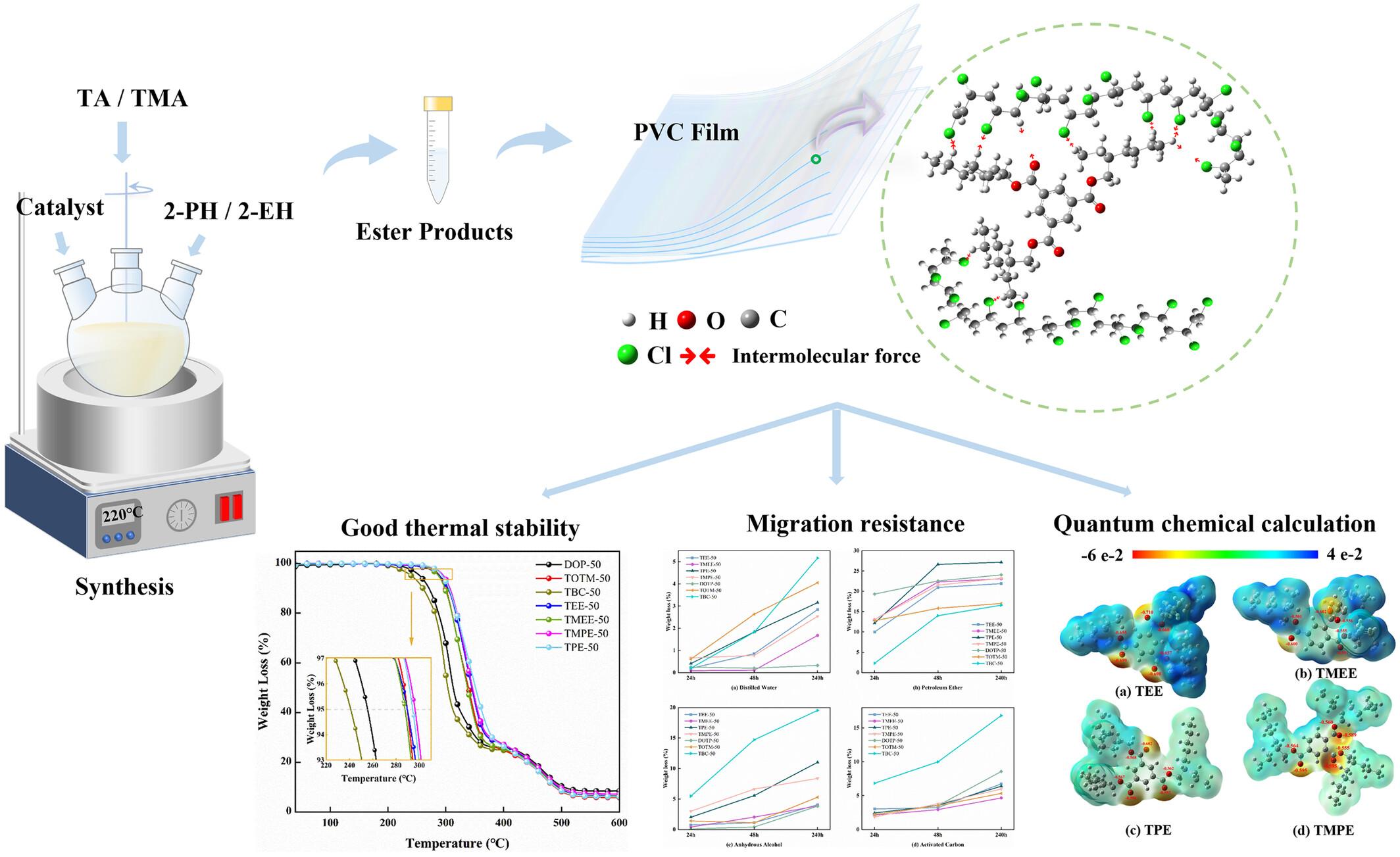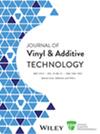Synthesis and application of environmental plasticizers based on benzene polyacid ester
Abstract
Using benzene-1,3,5-tricarboxylic acid, trimellitic anhydride, 2-propylheptanol and 2-ethylhexanol as raw materials, four kinds of environmental plasticizers were prepared, which were used as additives for polyvinyl chloride (PVC) products. Compared with commercially available di (2-ethylhexyl) phthalate (DOP), di (2-ethylhexyl) terephthalate (DOTP), and tributyl citrate (TBC), the application performance and plasticizing performance were compared. The structure of the target product was analyzed by fourier transform infrared spectroscopy and nuclear magnetic resonance spectroscopy to verify the fingerprint region of the molecular structure of the product. The properties of plasticized PVC films were tested by thermal weight loss analysis, oven thermal aging test, migration and volatility resistance test, DMA analysis, and scanning electron microscopy. The plasticizing mechanism was confirmed through quantum chemical calculations, and the results of the calculations were in line with the migration outcomes. The results showed that compared with commercially available plasticizers, benzene polyacid ester plasticizers had better thermal stability, and better cold resistance in the polar environments, suitable for high-temperature and water-based environments.
Highlights
- The four plasticizers prepared in this study were compared with reference plasticizers, and the plasticizing mechanism was validated through quantum chemical calculations.
- The PVC film plasticized with benzene polyacid ester prepared in this study demonstrates outstanding thermal stability, surpassing certain plasticizers reported in current literature.
- Benzene polyacid esters plasticized PVC film has migration stability under various conditions, it has great potential in packaging and other applications.


 求助内容:
求助内容: 应助结果提醒方式:
应助结果提醒方式:


